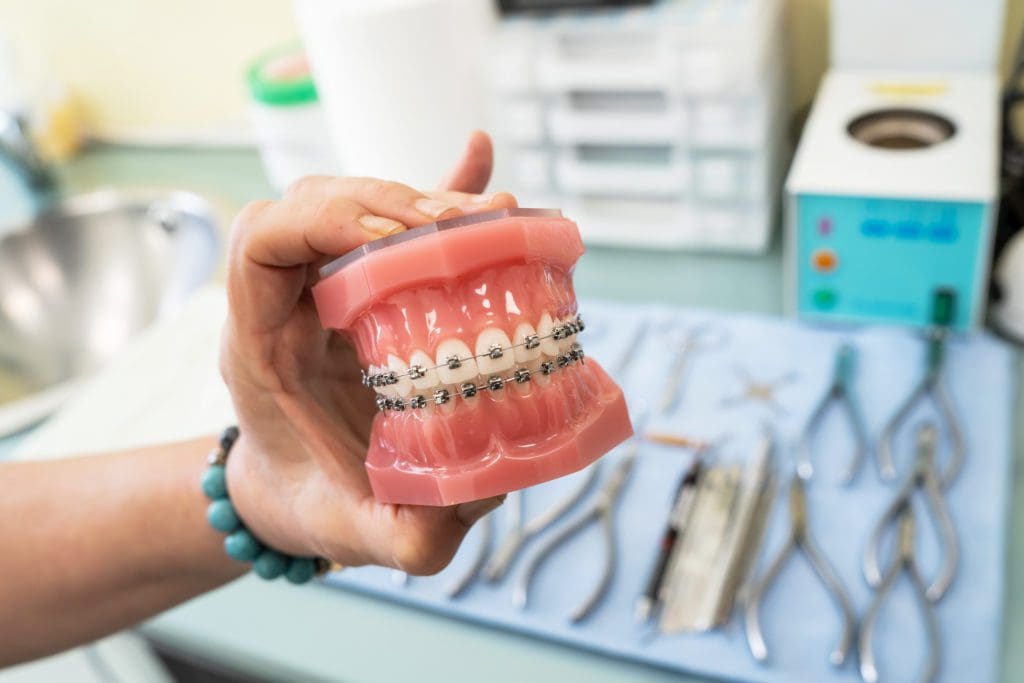Comprehensive Overview to Orthodontics Procedures for Fixing Oral Imbalances
In the realm of orthodontics, the journey to accomplishing a perfectly lined up smile entails a myriad of treatments tailored to fix dental imbalances. From traditional braces to unnoticeable aligners and also medical alternatives, the area of orthodontics supplies a variety of options to resolve differing levels of oral abnormalities. Understanding the complexities of each treatment, including their devices, advantages, and potential drawbacks, is vital in making notified choices regarding one's orthodontic treatment. As we navigate with the extensive overview to orthodontic procedures for remedying dental imbalances, the complex information of each approach will unravel, losing light on the course towards a practical and harmonious dental alignment.
Orthodontic Procedures Overview

Normal adjustments and monitoring are vital components of orthodontic therapy to make certain progression is on track and to make any type of essential alterations along the means. By undertaking orthodontic treatments, people can not just attain a straighter smile however likewise enhance their general oral health and function.
Standard Dental Braces: Exactly How They Function
When taking into consideration orthodontic therapies for dental imbalances, conventional dental braces stand out as a time-tested technique for dealing with teeth positioning. Conventional braces consist of brackets, wires, and bands that function together to apply continuous pressure on the teeth, slowly relocating them into the wanted placement.
One key aspect of exactly how traditional braces work is the process of bone renovation. As pressure is applied to the teeth through the dental braces, the bone surrounding the teeth is improved to sustain the brand-new tooth placements. This renovation is vital for the long-term stability of the dealt with positioning. Patients will need routine modifications at the orthodontist's workplace to make certain the dental braces proceed to use the right pressure for effective teeth movement.
Unnoticeable Aligners: Disadvantages and pros
Unseen aligners supply a hassle-free and discreet option to traditional dental braces for dealing with oral misalignments. These clear, customized trays are basically unseen when put on, making them an attractive option for people looking for a much more visually pleasing orthodontic therapy. Among the primary benefits of unseen aligners is their removability, permitting for much easier maintenance of dental hygiene contrasted to standard braces. Patients can get rid of the aligners before eating or brushing their teeth, lowering the threat of food obtaining stuck in the device and streamlining the cleaning procedure.

Surgical Orthodontic Options
Surgical interventions in orthodontics present practical choices for dealing with complicated dental imbalances that might not be properly settled via standard orthodontic therapies. While standard braces in network dentist and invisible aligners can correct several orthodontic concerns, specific situations require surgical intervention to attain optimum results. Surgical orthodontic options are typically advised for serious malocclusions, significant jaw discrepancies, and instances where the underlying bone framework needs alteration to attain appropriate alignment.
One usual surgical orthodontic treatment is orthognathic surgical treatment, which involves rearranging the jaws to remedy useful concerns such as problem speaking or chewing. This surgical procedure is typically performed in cooperation with an orthodontist that helps align the teeth prior to and after the procedure. Surgical orthodontics might also include procedures to subject influenced teeth, eliminate excess periodontal tissue, or improve the jawbone to create an extra harmonious face account.
Before considering medical orthodontic options, individuals undergo a detailed evaluation to figure out the necessity and potential advantages of such treatments. cumming braces. While surgery may appear challenging, it can significantly boost both the feature and visual appeals of the smile in instances where standard orthodontic treatments fall short
Retainers and Post-Treatment Treatment

Post-treatment care includes complying with the orthodontist's guidelines diligently. This may include appropriate dental hygiene methods, attending follow-up visits, and using the retainers as suggested. Failing to adhere to post-treatment care instructions can lead to relapse, where the teeth gradually return towards their original positions. Consistent retainer wear, good oral health, and regular oral exams are important for keeping the outcomes attained with orthodontic surgery and guaranteeing the long-lasting stability of the fixed dental positioning.
Conclusion
Finally, orthodontic procedures use various options for correcting oral misalignments. Traditional dental braces use steel braces and wires to shift teeth into proper alignment. Unseen aligners give a more discreet option like it however may not be suitable for all instances. Surgical orthodontic options are offered for more serious misalignments. Retainers are generally utilized post-treatment to preserve the brand-new placement. In general, orthodontic treatments can successfully improve oral health and wellness and visual appearance.
As we browse via the comprehensive overview to orthodontic treatments for fixing dental misalignments, the complex details of each technique will certainly unravel, shedding light on the path toward a functional and harmonious oral alignment. - cumming braces
One of the most typical orthodontic treatments is the use of braces, which consist of steel brackets and cords that apply gentle pressure to gradually move teeth right into the wanted setting.When taking into consideration orthodontic treatments for dental misalignments, standard dental braces stand out as a reliable approach for correcting teeth positioning. Additionally, unnoticeable aligners may not be appropriate for complicated orthodontic problems that need even more considerable teeth motion, as they are commonly advised for light to modest instances. Retainers are custom-made orthodontic devices made to hold teeth in their corrected placements after the completion of orthodontic treatment.